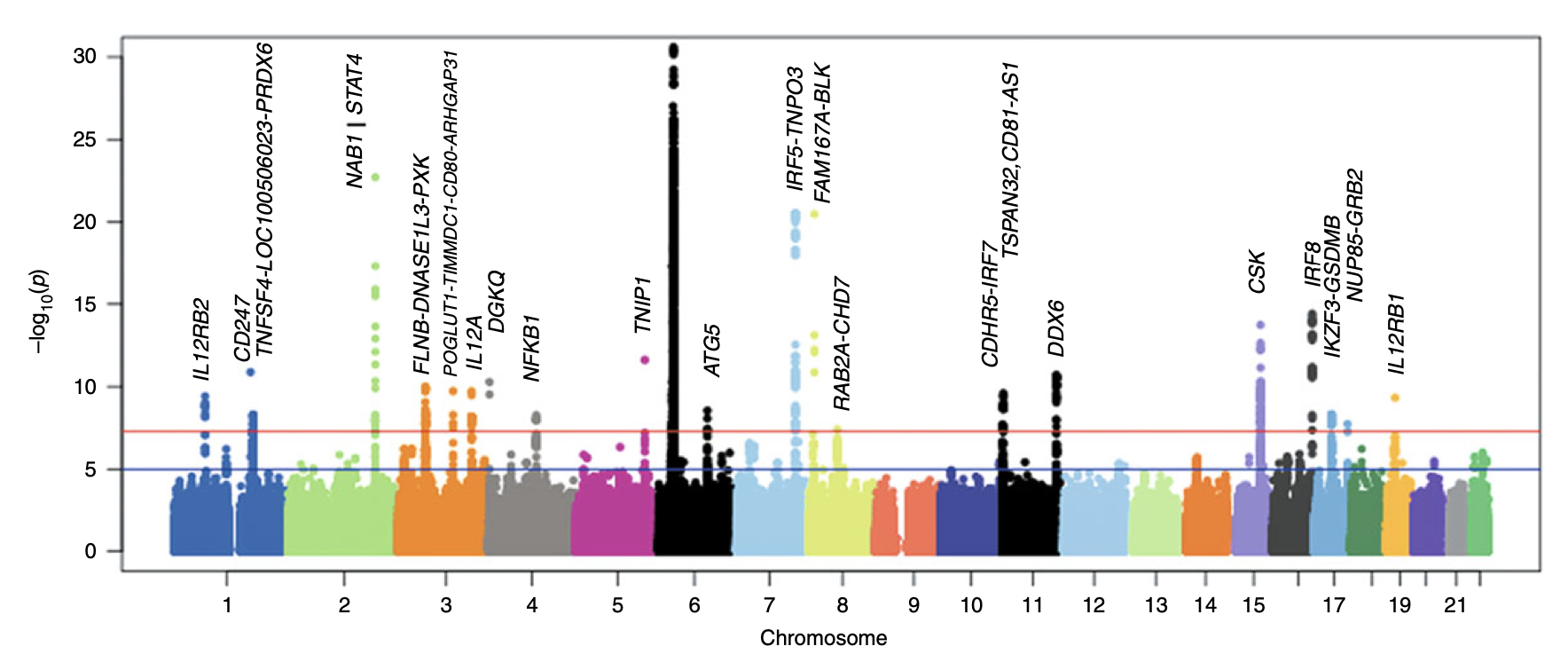
López-Isac E, Acosta-Herrera M, Kerick M, Assassi S, Satpathy AT, Granja J, Mumbach MR, Beretta L, Simeón CP, Carreira P, Ortego-Centeno N, Castellvi I, Bossini-Castillo L, Carmona FD, Orozco G, Hunzelmann N, Distler JHW, Franke A, Lunardi C, Moroncini G, Gabrielli A, de Vries-Bouwstra J, Wijmenga C, Koeleman BPC, Nordin A, Padyukov L, Hoffmann-Vold AM, Lie B; European Scleroderma Group†, Proudman S, Stevens W, Nikpour M; Australian Scleroderma Interest Group (ASIG), Vyse T, Herrick AL, Worthington J, Denton CP, Allanore Y, Brown MA, Radstake TRDJ, Fonseca C, Chang HY, Mayes MD, Martin J.
Nature Communications, 31 October 2019
Systemic sclerosis (SSc) is an autoimmune disease that shows one of the highest mortality rates among rheumatic diseases. We perform a large genome-wide association study (GWAS), and meta-analysis with previous GWASs, in 26,679 individuals and identify 27 independent genome-wide associated signals, including 13 new risk loci. The novel associations nearly double the number of genome-wide hits reported for SSc thus far. We define 95% credible sets of less than 5 likely causal variants in 12 loci. Additionally, we identify specific SSc subtype-associated signals. Functional analysis of high-priority variants shows the potential function of SSc signals, with the identification of 43 robust target genes through HiChIP. Our results point towards molecular pathways potentially involved in vasculopathy and fibrosis, two main hallmarks in SSc, and highlight the spectrum of critical cell types for the disease. This work supports a better understanding of the genetic basis of SSc and provides directions for future functional experiments.